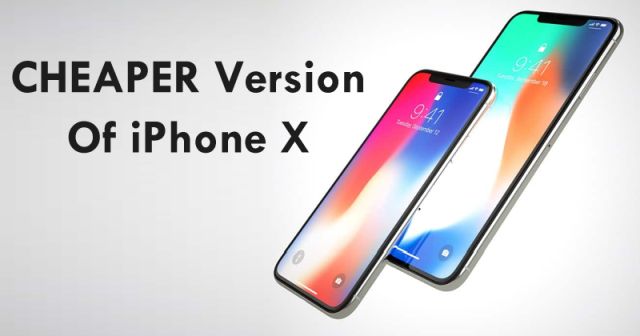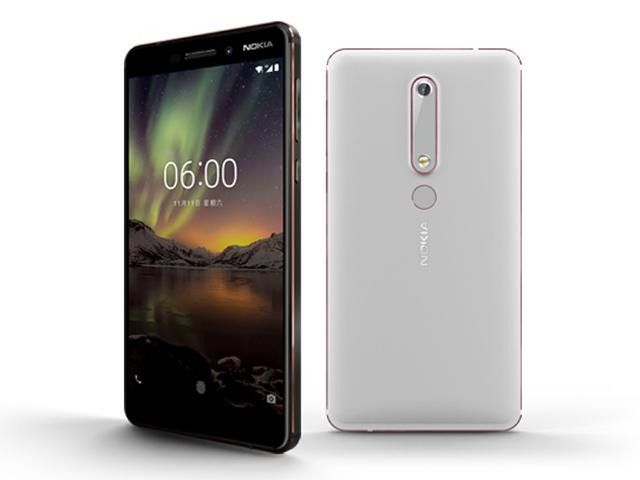
by Editor | May 25, 2021 | Branding, Business, Markets, Medium Enterprise, Online Marketing, Sales, SMEs, Technology
 By Krishna SinhaChaudhury,
By Krishna SinhaChaudhury,
New Delhi : Eyeing a bigger pie of the fiercely-competitive budget smartphone market in India, Lenovo-owned Motorola has added a bigger display and visibly improved the design language of the newly-launched Moto G6.
It is essentially a successor to the hugely-popular Moto G5 and attempts to fill in the gaps left by its predecessor.
Launched at Rs 13,999 for 3GB RAM and 32GB onboard storage variant, Moto G6 features a Full HD+ “Max Vision” — an edge-to-edge display with a taller 18:9 aspect ratio for immersive viewing experience and integrated Dolby Audio preset modes.
Amid a sea of budget devices, should you consider Moto G6? Here is what we think of it.
Moto G6 comes wrapped in a scratch-resistant, shiny Corning Gorilla Glass front and rear with slightly contoured sides that make it fit effortlessly into the palm. The way it caught light when held up was impressive.
The 5.7-inch FHD+ is a step up from the all-metal Moto G5 and also resulted in better network connectivity.
Thanks to its slightly curved rear, this is perhaps the most comfortable and perfectly-sized smartphone, which is easy to use with one hand.
We particularly liked the placement of the fingerprint sensor on the front which can be pressed to both lock and unlock the device.
The scanner was accurate and pretty snappy.
There was this one-button navigation gesture — in typical Motorola-style — which the company started introducing well before Google had plans to roll out the feature with Android P Operating System (OS).
A significant upgrade from the previous budget devices to the Moto G6 is the USB Type-C port. Housed alongside, on the phone’s bottom edge, is the standard 3.5-mm headphone jack.
The 12MP primary camera with 5MP secondary rear sensor let us take portrait shots with Bokeh effects.
The photos, including the portraits, were good. The images had accurate colours and were fairly detailed when shot in favourable lighting conditions. The selfies taken on the phone also came out good in well-lit conditions.
The device is powered by 3,000mAh battery with the company’s proprietary “TurboPower” charger that fuelled the phone from 0 to 100 per cent in about one-and-a-half hours.
Thanks to Motorola’s hardware optimisation, the budget Qualcomm Snapdragon 450 chipset performed well and handled everyday tasks smoothly.
What did not work?
Photographs shot in low-light conditions from both the primary and front cameras missed out on detail and looked grainy.
We were able to quickly charge the battery but it depleted rather quickly. We managed to squeeze out close to 12-13 hours on a single charge.
Conclusion: Considering the overall performance, design and build quality, we can easily say that this is a great value-for-money buy that ticks the right boxes.
We would recommend the phone to those looking for a neat stock Android experience without willing to shell out a lot on a smartphone.
(Krishna SinhaChaudhury can be contacted at krishna.s@ians.in)
—IANS

by Editor | May 25, 2021 | Branding, Business, Markets, SMEs
 San Francisco : Apple enthusiasts could get an all-screen iPhone for a fraction of the cost, with a new notch-equipped 2018 iPhone starting as low as $600, according to a famous analyst associated with Taiwanese business group KGI Securities.
San Francisco : Apple enthusiasts could get an all-screen iPhone for a fraction of the cost, with a new notch-equipped 2018 iPhone starting as low as $600, according to a famous analyst associated with Taiwanese business group KGI Securities.
Ming-Chi Kuo said in a recent research note that pricing for Apple’s upcoming iPhones could start at $600.
“Kuo believes that Apple may release three iPhones in fall 2018 — a relatively affordable 6.1-inch LCD iPhone, a new 5.8-inch OLED flagship (perhaps the iPhone X2) and a 6.5-inch OLED “iPhone Plus” model,” CNET reported on Sunday.
Meanwhile, the 6.5-inch successor to the super-premium iPhone X with an OLED screen could still cost higher.
The device is likely to cost between $900 and $1,000, Kuo forecast.
The analyst believed that the iPhone maker would announce and release all three 2018 iPhones in September.
Last year, Apple announced the iPhone X, iPhone 8 and iPhone 8 Plus in September. However, the units did not hit shelves until October and November.
—IANS

by Editor | May 25, 2021 | Branding, Business, Large Enterprise, Marketing Basics, Markets, Technology
 By Nishant Arora,
By Nishant Arora,
New Delhi : In the ever-evolving world of smartphones, a few mobile handset makers have been tempted to launch two or even multiple brands in order to gain a larger chunk of the market or create a presence across price segments.
The approach has so far worked in some countries — like in China — but when it comes to India, the dual-brand strategy hasn’t been fruitful till date and has, in fact, affected the vendors’ long-term goals.
Let us look at two big Chinese vendors — Lenovo-Motorola and Huawei-Honor — who have gambled on this strategy in India.
Lenovo’s smartphone shipments in India were just short of a million units, falling by more than 60 per cent (year-on-year) in the first quarter of 2018, according to Hong Kong-based Counterpoint Research.
The last Lenovo-branded smartphone that arrived in India was Lenovo K8 Plus in September 2017. Since then, there has not been any Lenovo-branded device in sight.
Motorola, which has a better visibility and brand value, has seen Moto devices being launched at regular intervals. Motorola Mobility is strengthening its retail presence pan-India with opening more and more “Moto Hubs”.
Meanwhile, Huawei’s sub-brand Honor entered the list of top five most-selling smartphone brands in India for the very first time in the first quarter of 2018. Honor registered a 146 per cent growth in the last quarter.
Sensing newer opportunities, Huawei has now brought its premium smartphone “P20 Pro” to the country for Rs 64,999.
However, its earlier avatar, Huawei P10, never made it to India. The last ‘P’ series device that arrived in the country was “P9” in 2016. Since then, Huawei has been promoting its sub-brand Honor.
The companies are yet to accept the ground reality but the fact is that the Indian consumers are not ready to accept dual brands from one vendor.
“The dual-brand strategy is working fine for Huawei in China. However, we do not have any such success story in India so far,” Jaipal Singh, Senior Market Analyst, IDC India, told IANS.
“That the Lenovo group is gradually decreasing its dependency on the Lenovo brand in India is evident from the fact that most of the devices shipped in India in Q1 2018 were Motorola, which enjoys stronger brand recall in India among both consumers and channels,” Singh noted.
According to Counterpoint Research’s Q1 2018 report, Lenovo and Motorola were out of the top-five vendors’ list in India after a long time.
“The dual-brand strategy is not working for Lenovo-Motorola in India as they have brought devices in almost similar price range, overlapping the positioning in the market,” Tarun Pathak, Associate Director at Counterpoint, told IANS.
Having two brands makes sense if there is some clear demarcation aligned.
“Somewhere, the messaging about Motorola being the choice of evolved users has diminished prospects for Lenovo. Which user will concede that s/he isn’t an evolved one, hence go for Lenovo?,” said Faisal Kawoosa, Head-New Initiatives, CyberMedia Research (CMR).
Retailers had a strong association with Motorola in the initial days of mobile revolution a decade and a half back and are still interested to work with the brand.
“Lenovo’s decision to bet more on Motorola can work in its favour in the long run because Lenovo’s positioning was primarily around aggressive pricing, which has weakened in the past few quarters owing to brands like Xiaomi,” Singh noted.
According to Kawoosa, it is better for Lenovo to go for a single brand in India and, in that case, “Motorola is any time preferred. They can however, always message something like ‘A Lenovo Brand.'”
In fact, the two-brand strategy hasn’t worked for any player in the country.
“We have Lava-Xolo and Micromax-Yu as examples. Without a brand having a convincing reason to exist, it’s better to have just single brand in the interests of simplicity,” Kawoosa told IANS.
Nick Reynolds, Chief Marketing Officer of Lenovo, told IANS during the Consumer Electronics Show (CES) 2018 in January this year that dual-brand strategy of the company would be decided by the customer.
“If the Indian customer views Moto as a premier product, we will position it as such. But if the Indian customer looks for better priced product, our strategy would be to use Lenovo as brand name,” Reynolds told the visiting IANS jounralist.
According to Pathak, Lenovo has a good opportunity to leverage Motorola’s brand and enter new price segments.
“But lately, most of their sales were from sub-$150 segment for both the brands. Hence, it needs to refresh Motorola’s “G” series and target the market again with a multi-channel retail strategy,” Pathak suggested.
Honor, on the other hand, has launched a bunch of smartphones in the last two quarters with several mid-range options like Honor 9 Lite and Honor 7X. The variety and affordable pricing have helped the company enter the top-five list for the first time in Q1 2018.
What applies to Lenovo is true for Huawei too to keep pace with the changing dynamics of the Indian smartphone market.
(Nishant Arora can be contacted at nishant.a@ians.in )
—IANS

by Editor | May 25, 2021 | Branding, Business, Marketing Basics, Markets, Medium Enterprise, Technology

Nokia 6 (2018)
By Krishna SinhaChaudhury,
New Delhi : Finnish company HMD Global launched Nokia 6 last year with a good design — but its internals left users craving for more.
The company, which got the licence in 2016 to sell Nokia-branded devices and displayed its first line-up last year, has now launched a refreshed iteration of Nokia 6 that runs the “Android One” platform — the unmodified Android operating system (OS) with a promise of improved security through frequent updates.
Android One primarily focused on entry-level devices for emerging markets, including India, but later evolved into Google’s key mobile programme.
At Rs. 16,999 for 3GB RAM and 32GB on-board storage, Nokia 6 (2018) competes with the likes of Xiaomi Redmi Note 5 Pro and Honor 9 Lite.
Here is what we think of the new Nokia 6.
Carved from a single block of 6,000-series aluminium and the two-tone anodisation (a process used for the surface treatment of aluminium), this device is a classic Nokia.
The design does not scream for attention — though the slightly curved rear impresses — and the sturdy build would make sure the device can handle a few falls.
The 16MP primary camera now comes with Zeiss optics and the black-coloured variant with copper trimmings on the side, as well as the camera module and the fingerprint scanner, give the device a stylish edge over its rivals.
Despite the sturdy built, the device was not heavy to hold, thus making it ergonomic as well.
The subtle antenna bands running on the top and bottom of the smartphone looked good.
Unlike last year’s iteration, the new Nokia 6 comes with upgraded specifications, such as a newer octa-core Qualcomm Snapdragon 630 chipset which also powers the pricier Moto X4.
Performance was smooth and we did not notice any significant stutter while running several apps, browsing videos and chatting on social media apps simultaneously.
The 16MP primary camera produced crisp and well-balanced shots during the review. The images were neither too washed out nor looked over-saturated.
The 8MP wide-angle front shooter also produced decent images.
HMD Global has not heavily customised the camera software, adding what it calls a “bothie Mode” which we first saw on last year’s Nokia 8.
The “bothie” feature essentially activates both the front and rear shooters to capture images or videos simultaneously.
A 3,000mAh battery fuels the smartphone and it was good to see it supporting fast-charging technology and a USB-Type C port.
What does not work?
Despite being launched in 2018, the device comes with the traditional aspect ratio of 16:9 which is likely to put off many users as new smartphones in the similar price range have moved on to the 18:9 aspect ratio.
We also found the device heating up on a few occasions, including gaming.
The primary camera showed lag while processing images on a few occasions.
Conclusion: Capable hardware coupled with pure and clean Android and a good overall experience makes the 2018 Nokia 6 a competent and a stylish smartphone in this price segment.
(Krishna SinhaChaudhury can be contacted at krishna.s@ians.in)
—IANS

by Editor | May 25, 2021 | Branding, Business, Markets, Medium Enterprise, Technology

Infinix HOT S3
By Vivek Singh Chauhan,
New Delhi : There have been quite a few smarphones launches in the sub-Rs 10,000 price category in the recent past, playing on one USP or the other.
When it comes to selfie-focused smartphones, Chinese players like Oppo, Vivo and Xiaomi are already ruling their respective segments.
In this competitive selfie market, Infinix, which is an online smartphone brand from China-based Transsion Holdings, has launched the “HOT S3” device that sports a massive 20MP front camera.
The smartphone is available in two variants — a 3GB RAM and 32GB internal storage variant which costs Rs 8,999, and a 4GB RAM and 64GB on-board storage version priced at Rs 10,999.
Let us see what the device has to offer.
The HOT S3 has a 5.65 inch HD+ “Full View” display (18:9 aspect ratio) with a 2.5D curved display glass atop. The 18:9 format offers more viewing space and a better immersive experience while streaming videos and playing games.
It has a fingerprint sensor at the back, power and volume rocker on the right, dual-SIM card slot on the left (storage can be expanded up to 128GB) and a 3.5mm headphone jack on top.
The fingerprint sensor was impressive and unlocked the device quickly.
Infinix “Hot S3” now has the new “Face Unlock” feature which is another USP in the device. The feature worked fine.
The device is powered by a Qualcomm Snapdragon 430 octa-core processor, coupled with 3GB RAM and 32GB internal storage. It runs Android Oreo Operating System (OS) and its custom “Hummingbird XOS 3.0 UI” on top.
In the price segment, Smartron’s t.phone and Redmi 4 use similar configurations.
While using the device, there was were no hiccups. The performance was at par with the competitors and the device did not lag even during multi-tasking.
The device sports a 4,000mAh battery and on a general usage that included light gaming, all-day 4G/Wi-fi connectivity, frequent camera usage and video consumption, the battery lasted for more than a day.
The highlight of the device is its 20MP selfie camera that comes with an f/2 aperture with LED flash and 13MP rear camera — also with f/2 aperture — PDAF and dual LED flash on the back.
The 13MP rear camera gave satisfactory results in daylight conditions.
The pictures captured from the selfie shooter were excellent. The images were sharp with the right balance of colour and detail even in low-light conditions.
The camera app has beauty, time-lapse and professional modes along with a few filters that can be applied while clicking pictures.
Once applied, the beauty feature softens the skin texture and removes spots from the face.
What does not work:
The colour reproduction of the display was a put-off. Further updates might smoothen the “Face Unlock” feature as it was difficult to unlock the device in low-light conditions.
Conclusion: The Infinix HOT S3 is a good choice for those who love selfies as well as for those interested in basic photography. The device is a decent alternative to Xiaomi Redmi 4 (3GB RAM+32GB variant) and t.phone in the similar price range.
(Vivek Singh Chauhan can be contacted at vivek.c@ians.in)
—IANS





